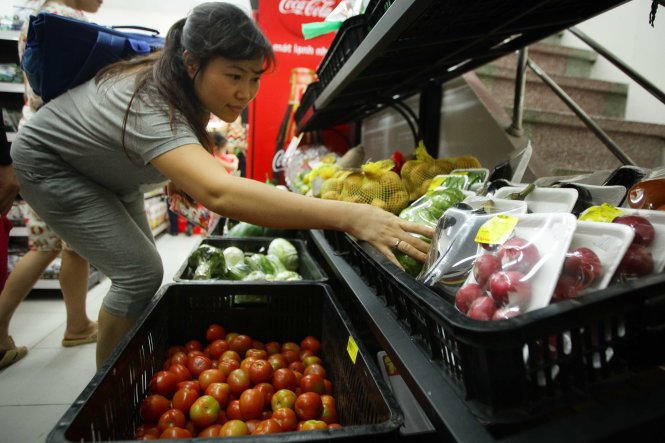Vietnam is mulling replacing unsafe vegetables imported from China with the greens grown in Da Lat to supply to the markets in Hanoi and surrounding localities.
>> An audio version of the story is available here
“Da Lat greens” are the trademark of fruit, vegetables and bulbs produced in the Central Highlands province of Lam Dong in Vietnam.
Da Lat is the name of a famous resort town which is also the capital city of the province.
Currently Vietnam’s northern markets consume around 700 metric tons of agricultural products a day, of which 200 metric tons are from China and 50 metric tons come from Da Lat. The rest are transported from other sources.
Da Lat products are a registered trademark and meet safety standards, while the Chinese produce is not.
Authorities in Hanoi and Lam Dong, home to the “Da Lat greens” brand, held a meeting on October 30 in the capital to discuss the way to replace Chinese produce with the Da Lat products. Representatives attending the event admitted that Da Lat vegetables have huge potential to compete with the Chinese in the northern markets but lack an effective distribution system.
Vu Tien Loc, chairman of the Vietnam Chamber of Commerce and Industry, told the meeting that it is not easy for Hanoi people to find Da Lat vegetables in markets.
To avoid eating unsafe products from China, many choose to cultivate vegetables in their gardens, on rooftops or on shelves for home use, Loc added.
In the meantime, Da Lat vegetables have been exported to ten nations worldwide but are absent from the domestic market in the Vietnamese capital.
The distribution of Da Lat vegetables in Hanoi is beneficial to both Da Lat producers and local residents.
Transport cost and post-harvest preservation are the challenges for Da Lat vegetables in competition with the Chinese plants in Hanoi.
Enterprises with strong financial capacity mostly ignore investment in distribution networks in the capital city and just focus on such fields as stocks and real estate where they can quickly earn a profit.
“Vietnam should set up a strong chain of distribution for farming products so that Da Lat vegetables can beat the Chinese produce in Hanoi and other domestic markets,” Loc said.
Nguyen Van Yen, vice chairman of the People’s Committee of Lam Dong Province, told the meeting that the production capacity of local farmers has been increasing but they lack a market.
“Presently we have 17,000 hectares of farming land available for cultivating vegetables that produces 2.3 million metric tons a year,” he underlined.
“Our farmers can expand their vertical production area to plant vegetables on shelves. So we can increase the output if we have stable markets.”
Nguyen Tien Vuong, deputy general director of Hanoi Commercial Company, said Da Lat vegetables can only reach the hands of consumers if they are available at wholesale and retail markets in the capital.
Those markets have been dominated by Chinese vegetables, Vuong noted.
Many representatives also called on officials to step up checks on the origin of farming products to help Da Lat vegetables replace those from China.
Like us on Facebook or follow us on Twitter to get the latest news about Vietnam!






















































